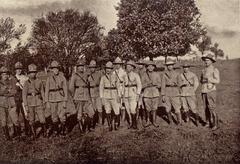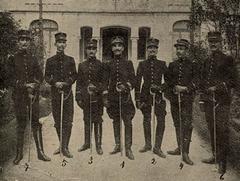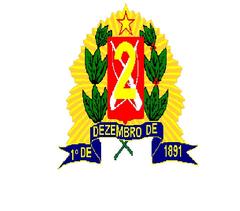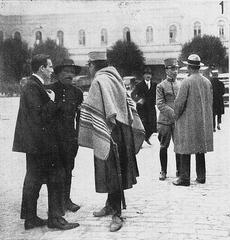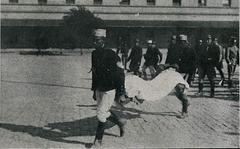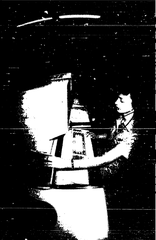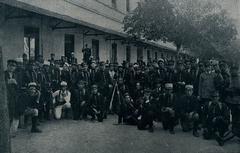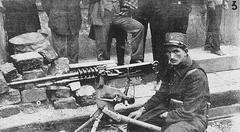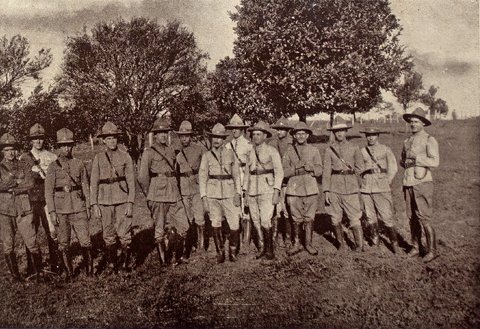
Military Police of São Paulo State: Visiting Hours, Tickets, and Historical Significance
Date: 14/06/2025
Introduction
The Military Police of São Paulo State (Polícia Militar do Estado de São Paulo, PMESP) is a foundational pillar in Brazil’s largest and most populous state, responsible for maintaining public security and shaping regional history. Established in 1831, the PMESP has evolved alongside Brazil’s social and political transformations, from its imperial origins through republican reforms and into the modern era. Today, it stands as Latin America’s largest state police force, with a far-reaching impact on community safety, public order, and cultural identity (PMESP Official History; Wikipedia).
For those interested in exploring this legacy, the Museu da Polícia Militar offers a comprehensive and immersive experience. Housed in São Paulo’s historic Luz neighborhood within an architecturally significant building, the museum presents a vast collection of artifacts, documents, and educational resources chronicling the PMESP’s journey and its role in pivotal events such as the Constitutionalist Revolution of 1932 (Museu da Polícia Militar; Official Military Police Museum Website).
This guide details the PMESP’s origins, structure, social impact, and innovations, while providing essential visitor information for the museum—covering hours, tickets, accessibility, and nearby attractions. Whether you are a local history enthusiast or an international traveler, this resource will help you appreciate and plan your visit to one of São Paulo’s most important cultural institutions.
Table of Contents
- Origins and Early Development
- PMESP in Key Historical Periods
- Structure and Organization
- Social and Cultural Significance
- Notable Units and Innovations
- Visiting the Museu da Polícia Militar
- Frequently Asked Questions (FAQ)
- Conclusion
- Call to Action
- References
Origins and Early Development
The PMESP began as the “Corpo de Guardas Municipais Permanentes” in 1831, addressing growing demands for public order in an expanding São Paulo. Over the 19th century, it underwent several restructurings and name changes, reflecting Brazil’s evolving political climate. During the imperial period, the force helped maintain civil peace and supported the monarchy, while the Republic’s proclamation in 1889 led to its rebranding as the “Força Pública,” emphasizing both police and military roles (PMESP Official History).
PMESP in Key Historical Periods
Republican Era and Early 20th Century
With the shift to a republic, the Força Pública became crucial in maintaining order amid rapid urbanization and industrialization. The force responded to labor strikes, social movements, and growing crime, often aligning with government interests during unrest (Brazilian Historical Review).
Constitutionalist Revolution of 1932
A defining moment was the PMESP’s leadership during the Constitutionalist Revolution of 1932. Alongside civilian volunteers, the force challenged the federal government, demanding a new constitution. Although the uprising was suppressed, it solidified the PMESP’s reputation for discipline and civic engagement (Museu da Polícia Militar).
Post-World War II and Modernization
After World War II, modernization efforts introduced new policing techniques and equipment. In 1967, following the military regime’s rise, the force was renamed PMESP, further embedding militarized structures and focusing on internal security and counter-insurgency.
Structure and Organization
The PMESP, with over 85,000 active personnel as of 2024, is structured along military lines, mirroring the Brazilian Army’s rank and command hierarchy (PMESP Statistics). Its key functions include:
- Preventive policing
- Traffic enforcement
- Crowd control at public events
- Specialized units for tactical, environmental, and highway operations
The PMESP covers São Paulo state, serving more than 44 million people (IBGE São Paulo Data).
Social and Cultural Significance
The PMESP symbolizes both order and authority in Brazilian society, but it has also faced criticism regarding police violence and human rights (Human Rights Watch Brazil). In response, the force has invested in modernization, transparency, and community policing to build public trust. Its headquarters, the “Quartel do Comando Geral,” is not only an operational center but also an architectural and cultural landmark, housing the Museu da Polícia Militar (Museu da Polícia Militar).
Notable Units and Innovations
- ROTA (Rondas Ostensivas Tobias de Aguiar): Elite tactical unit for high-risk operations
- Cavalry Regiment: Among the oldest mounted police in Brazil
- Environmental Police: Focused on ecological protection
- Highway Patrol: Responsible for road safety and enforcement
The PMESP is a leader in technological innovation, deploying body-worn cameras and advanced crime monitoring systems to enhance accountability (PMESP Technology Initiatives; Motorola Solutions).
Visiting the Museu da Polícia Militar
Historical Background and Architecture
Founded in 1958, the museum was initially a pedagogical institution before becoming part of the PMESP in 1976. It is housed in the former Military Hospital of the Public Forces, designed by Ramos de Azevedo in 1896, offering visitors a glimpse into São Paulo’s architectural evolution.
Collections and Exhibitions
The museum’s 10,000+ artifacts include:
- Uniforms and Badges: Tracing the evolution of police attire
- Weaponry: Cold weapons and firearms from various eras
- Medals and Decorations: Recognizing police valor
- Flags and Banners: Commemorating historical events
- Vehicles: Vintage patrol cars and motorcycles
- Equipment: Tools and communication devices from key operations
- Photographs and Documents: Extensive archives for researchers
A special section is dedicated to the Constitutionalist Revolution of 1932, displaying uniforms, weapons, and personal effects from the conflict.
Educational and Cultural Activities
The museum offers lectures, workshops, and symposia, as well as collaborative programs with other institutions to promote police and military history.
Library and Research Facilities
A specialized library holds about 8,000 titles and a large periodical collection. The photographic archive contains approximately 30,000 photos, negatives, and slides, ideal for historians.
Visitor Information
Location and Accessibility
- Address: Rua Brigadeiro Tobias, 300 – Centro, São Paulo (Bom Retiro district)
- Metro Access: Near São Bento Station (Line 1 – Blue) and Luz Station
- Accessibility: The historic building may present some mobility challenges; contact staff in advance for wheelchair access or special needs.
Visiting Hours and Tickets
- Tuesday to Friday: 9:00 AM – 5:00 PM
- Saturday: 10:00 AM – 4:00 PM
- Closed: Sundays and public holidays
- Admission: Free
Always confirm current hours and event schedules on the official website.
Guided Tours and Special Events
Guided tours are available by appointment and provide in-depth insights. The museum also hosts temporary exhibitions and special events—check the online calendar for details.
Facilities and Amenities
Amenities include restrooms and a gift shop with books and souvenirs. Staff can assist with research questions.
Safety and Neighborhood Tips
Bom Retiro is lively and generally safe during visiting hours, thanks to its proximity to police facilities. Exercise standard urban caution, especially outside museum hours.
Nearby Attractions
- Pinacoteca do Estado
- Luz Station
- São Paulo Cathedral
- Mercado Municipal
- São Bento Monastery
- Municipal Theatre of São Paulo
Visual Highlights
Key exhibits include vintage police vehicles, uniforms, and artifacts from the 1932 Revolution. Many displays feature informative captions and are optimized for accessibility.
Frequently Asked Questions (FAQ)
Q: What are the Military Police Museum’s opening hours?
A: Tuesday to Friday, 9:00 AM–5:00 PM; Saturday, 10:00 AM–4:00 PM; closed Sundays and public holidays.
Q: Is there an admission fee?
A: Admission is free.
Q: Are guided tours available?
A: Yes, guided tours can be arranged in advance.
Q: Is the museum wheelchair accessible?
A: The building is historic but accommodations can be made—contact the museum prior to your visit.
Q: Where can I find more information or updates?
A: Visit the official Military Police Museum website for the latest details.
Conclusion
The Military Police of São Paulo State, and its museum, stand as testaments to the region’s history, evolving public security practices, and cultural legacy. The museum’s rich collections and educational activities offer a valuable perspective for visitors, researchers, and residents alike. With free admission and a central location, it is a must-see destination for anyone interested in Brazilian history and law enforcement.
Call to Action
For up-to-date information, visit the official museum website, follow PMESP and the museum on social media, and download the Audiala app for curated tours and cultural insights. Explore our related articles for more tips on São Paulo’s top historical attractions.
References
- Polícia Militar do Estado de São Paulo Official History
- São Paulo State Military Police Museum Official Website
- Wikipedia: Military Police of São Paulo State
- Museu da Polícia Militar
- Motorola Solutions Press Release on PMESP Body Cameras
- Human Rights Watch Brazil Report, 2024
- Brazilian Historical Review
- IBGE São Paulo Data
- PMESP Technology Initiatives
